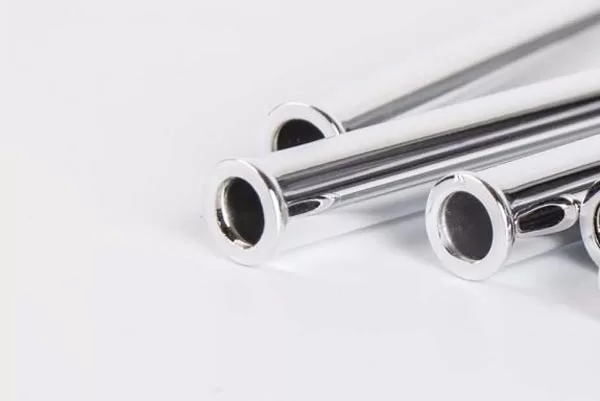Here is one thing you should know: all metal prototypes and CNC machined parts will have characteristic scratches on their surface. The depth and look of the scratches depend on the cutting tool and the material the components are made.
In some cases, you can ignore these scratches but to have a truly “finished” look, you may need to apply one or two secondary processes. That’s what finishing services are for.
These are seven finishing services techniques that you can use for your completed part.
Anodizing
It is a finishing process that increases the natural oxide layer of the metal surface. In anodizing, the metal undergoes an electrochemical process where the metal’s surface is converted with a durable, corrosion-resistant anodic oxide finish. It not only gives the part a beautiful finish but also strengthens it. The anodizing finish is used mostly of aluminum surface to cover the defects and make it last longer than it should.
Engraving
Most often, a finished metal part uses engraving to put its brand name on the surface of the product. You can opt for laser engraving, where the text, images, or patterns are burned into the metal surface with a laser. Laser engraving belongs to the laser marking family, which is a broader category of techniques to mark an object. Some of its methods can change the color of the metal with chemical or molecular alteration, foaming, melting, charring, and many others.
Polishing
Machined parts can leave a rough surface. With polishing, you can create a smooth and shiny surface with a rubbing tool or chemicals. It leaves the surface with superior reflection while removing the scars from the tools.

Electroplating service
Electroplating
Another finishing service that uses electric current is electroplating. It refines the look of the surface with a metal coating on an electrode. Modern electroplating is used by various industries including aerospace, automotive, medical, electronics, and many more. Electroplating can help increase the thermal resistance, strength, and chemical resistance of a part.
There are two types of electroplating:
Colored Electroplating – It uses a color finish over the surface of the material to give it a distinct and beautiful color. Color electroplating is employed when aesthetics should be given priority.
Vacuum Electroplating – This is a more complicated process than color electroplating. It involves heating the metal coating until it vaporizes in the vacuum chamber. The process will retain the chemical and mechanical properties of the material and only increase its non-corrosive property.
Sanding
Sanding is simply rubbing abrasive particles against the surface of a workpiece to create a random, non-liners surface texture on the surface of the material. The abrasive media used here is attached to a plate or backing paper. The size of its grains is referred to as grits, The higher the grit number, the finer the particles are. Higher grit numbers create a fine surface finish,
Coarse grits, on the other hand, can remove a large portion of the material. Sometimes, water and other lubricants are used to flush the materials and expose the new surface finish. Sanding is often used for curved or contoured surfaces,
Sandblasting
The process involves treating the surface of the part with an abrasive material under high pressure. In sandblasting, the type of media used will depend on the desired finish. It can cover a large surface area and improve the mechanical properties of the metal.
Filing
A file is a piece of hard metal steel with a series of parallel grooves in it. These grooves can leave behind rows of sharp-cutting teeth. The files can be used by hand and the amount of material removed from the material will depend on the coarseness of its teeth. The resulting surface finish from filing is rough and additional processes like sanding or polishing may be needed. The files are easy to use but may need a skilled hand for finer results.
How do you determine which finishing service is right for your metal part? Nice rapid can help you with that. It offers these finishing methods for CNC machined parts or prototypes.
